The best TV dramas on Netflix
Friday Night Lights, Better Call Saul, When They See Us are a few of the best TV dramas currently streaming on Netflix
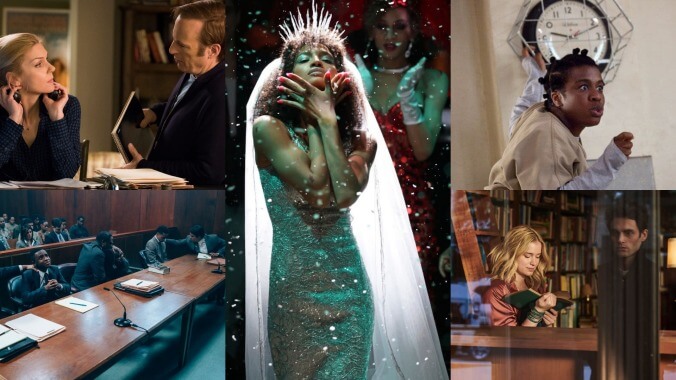
Streaming libraries expand and contract. Algorithms are imperfect. Those damn thumbnail images are always changing. But you know what you can always rely on? The expert opinions and knowledgeable commentary of The A.V. Club. That’s why we’re scouring both the menus of the most popular services and our own archives to bring you these guides to the best viewing options, broken down by streamer, medium, and genre. Want to know why we’re so keen on a particular show? Click the links for some in-depth coverage from The A.V. Club’s past. And be sure to check back often, because we’ll be adding more recommendations as shows come and go.
If you’re in the mood for some lighter fare, be sure to check out our catalogues of the best comedy series and specials on the service, as well as our picks for the best movies on Netflix.
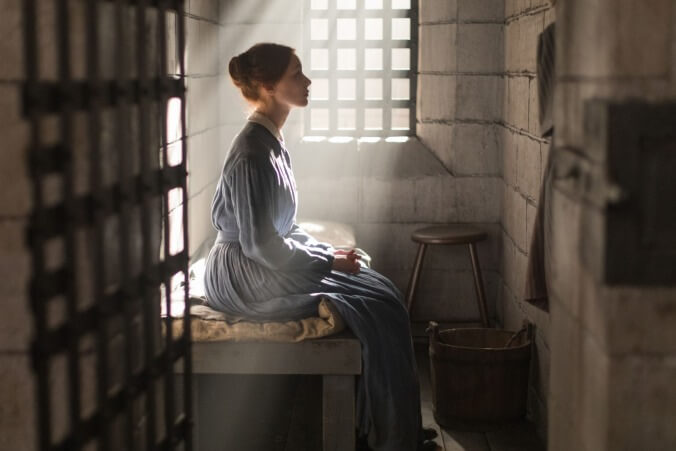
It’s the horrifyingly brutal Margaret Atwood adaptation that isn’t The Handmaid’s Tale. With a script from Sarah Polley, direction by Mary Harron, and a star turn from Sarah Gadon, this true-life period piece excels on all fronts, following a young 1840s woman who immigrates to Canada for work and ends up convicted of murdering her employer and his housekeeper. It’s only six episodes, but its impact lingers on well past the haunting final minutes. []
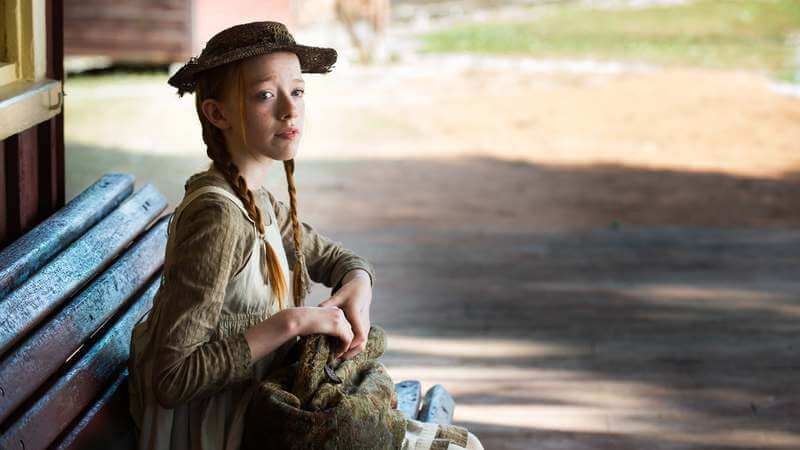
A newer adaptation of Lucy Maud Montgomery’s Anne novels may seem like an odd move, given the Canadian Broadcast Corporation’s pre-existing (and beloved) take on one of its native land’s best-known fictional characters. But that series premiered more than 30 years ago, and the characters in Anne Of Green Gables are well-served by this Netflix release (itself a CBC production), which is at once darker and sweeter than the original. []
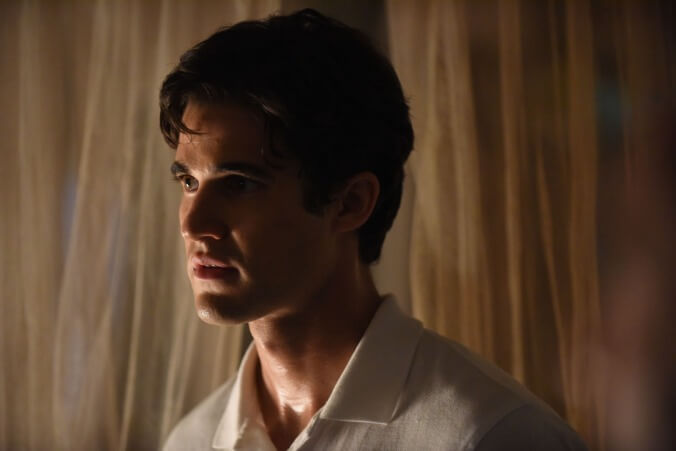
The first season of American Crime Story established an anthology series template: The People V. O.J. Simpson explored not the crime itself, but the circus that formed around it. The Assassination Of Gianni Versace takes a decidedly thornier and less spectacular approach to the same thematic material. Rather than indicting society by focusing on society, the series delves into the lives of the individual, often marginal people who were part of the lead-up to Versace’s murder—the Versace family, the gay men of Miami Beach, and, above all, the other victims of serial killer Andrew Cunanan. Darren Criss’ mesmerizing performance as Cunanan anchors the show, deconstructing the trope of the slick, charismatic gay serial killer and giving executive producer Ryan Murphy and writer Tom Rob Smith the room to use a reverse-chronological structure and lush visual storytelling to examine a plethora of under-considered, oft-ignored lives. In a roundabout, painful way, The Assassination Of Gianni Versace asks why nobody—not the media, not the police, sometimes not even their own families—cared that these people were gone. Much has changed in the years since Cunanan’s murders, but it’s hard to shake the central conviction of the series: We still haven’t. []
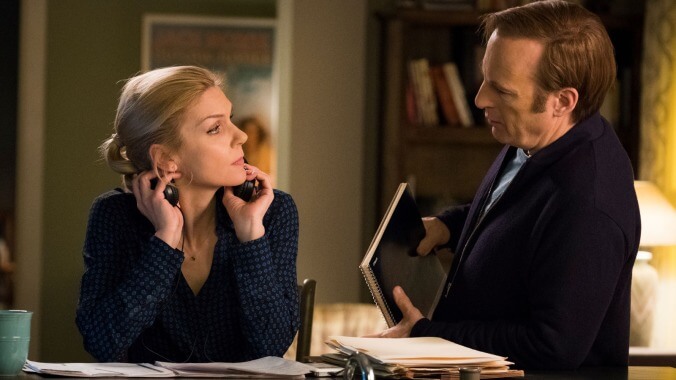
Vince Gilligan and Peter Gould’s prequel series successfully steps out of Breaking Bad’s shadow without stripping itself of that superlative drama’s dark, looming undertones. Set six years before Saul Goodman begins representing Walter White, Better Call Saul follows Jimmy McGill (Bob Odenkirk), a small-time attorney known for fighting for the underdogs and criminals. What sets this spin-off apart from others is how Odenkirk carries the show while navigating such a complex character. Every storyline bounces between tension-filled scenes and visual gags. Though he’s not the attorney we all know and love just yet, Jimmy finds himself in sticky legal situations that keep you on edge, waiting for his next move on a predetermined path to Saul-vation. []
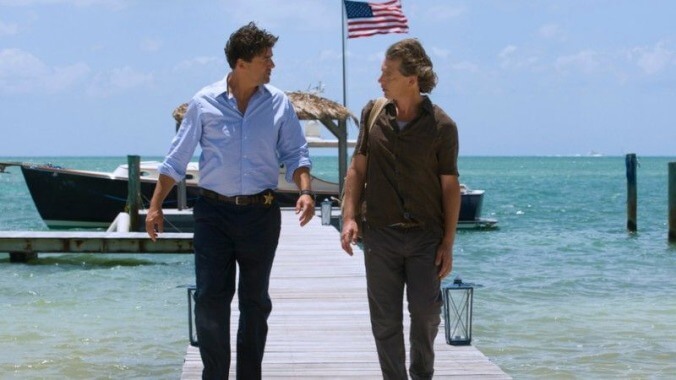
Netflix’s slow-burn exercise in family power struggles sure takes its time explaining how things get to its first-episode bombshell, but that’s because all the good stuff was happening in between the action. As a demonstration of top-notch acting, Bloodline can go toe-to-toe with any other show on this list, with Sissy Spacek, Kyle Chandler, Linda Cardellini, Norbert Leo Butz, and series standout Ben Mendelsohn giving note-perfect performances, and having the superb supporting cast rise to meet them. The Rayburns are that precious TV commodity—a recognizably human family, relatable and infuriating in equal measure. Like its sunny Florida Keys setting, the show makes a strength of languid and easygoing vibes; but it never fails to remind you that all that heat is just waiting to throw off sparks and ignite a psychodrama blaze. []
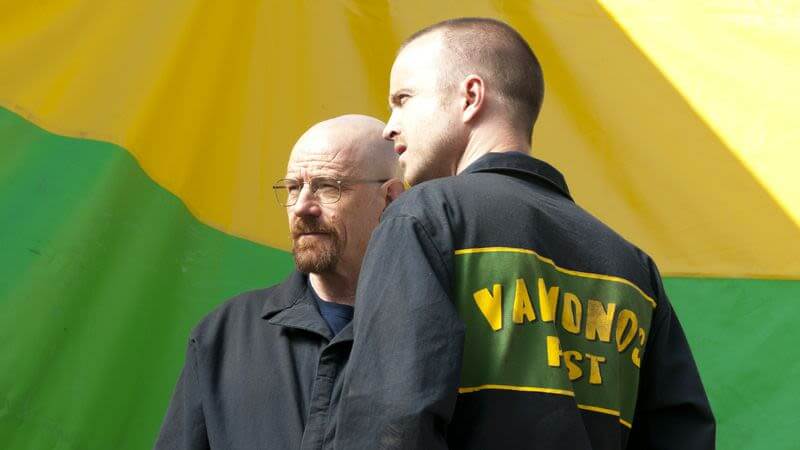
Though Vince Gilligan’s drama thrived on ambiguity—moral and otherwise—there’s no question of its greatness. Breaking Bad’s reach is long, including a stellar spin-off for one breakout character and a meditative coda for another. More than six years after it wrapped, Walter White’s (Bryan Cranston) steep descent into underworld boss haunts the conversations of TV aficionados and more casual fans alike. The series drew some of the best talent on and off screen, including directors like Michelle Maclaren and Rian Johnson. But while the advent of Netflix streaming certainly helped introduce Breaking Bad to new viewers (or just allowed lapsed ones to complete their watch) long after the final strains of “Baby Blue” played, this exceptional drama held audiences in its grasp for five seasons the old-fashioned way—with riveting plots and characters, unrivaled pacing, and a deep trust in its own storytelling. []

My dears, what do you think? In the lavishly picturesque world of Regency-era England here in Bridgerton, the new social season is about to begin in earnest. As I, Lady Whistledown, will faithfully be depicting in my popular scandal sheet, all of London’s eligible young lovelies are about to be presented to the court to hopefully extract the favor of the queen before being set forth to swim among a sea of hopeful suitors. Of course, the diamond of this year’s season is the porcelain-skinned and auburn-haired Daphne Bridgerton (Phoebe Dynevor), the first of her family’s four daughters to come forward and whose romantic exploits will undoubtedly take up much of my reports this season. (Also, I hear the queen’s husband is, shall we say, under considerable strain as of late, so perturbed is he after the loss of the colonies several seasons ago.) []
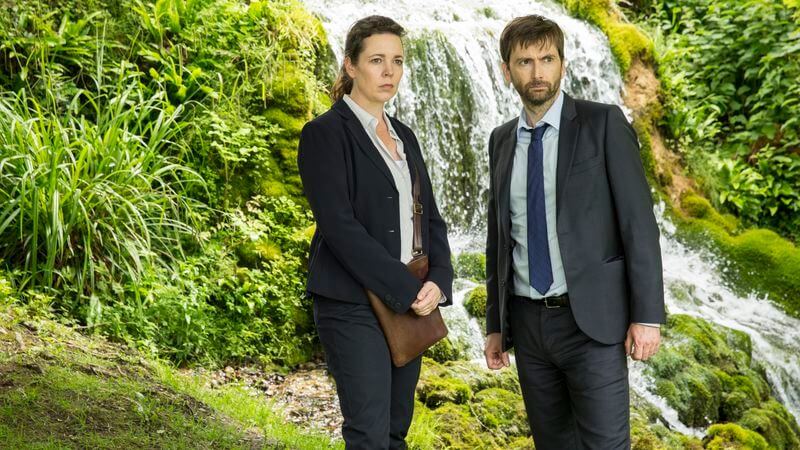
A heartbreaking murder made all the more tragic because the killer was a member of a close-knit, idyllic seaside community. What made Broadchurch so inherently watchable was its odd-couple detectives: David Tennant’s Hardy was as bitter and cantankerous as Olivia Colman’s Miller was open and warm. The whodunit unfurled episode by episode, crossing off suspects who doubled as relatives and friends. Broadchurch showed us that evil can come from the most surprising places, but so can true friendship, as its leads eventually discover. []
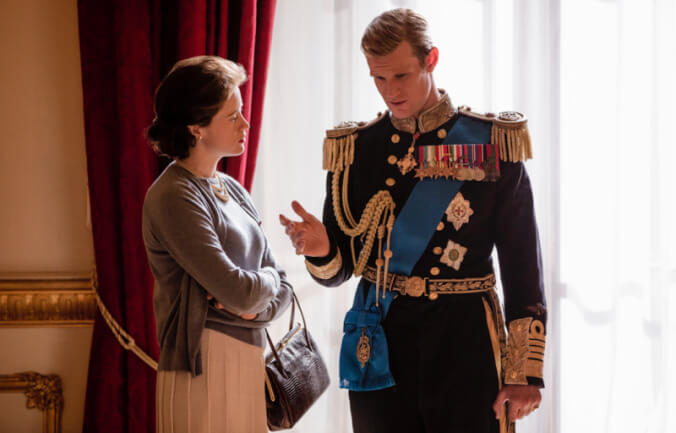
The Crown pulled back a heavy and ornate curtain to create a period drama out of one of the most private families in history: the Windsors of Buckingham Palace. Claire Foy and Matt Smith excelled as besotted lovers Elizabeth and Philip, trying desperately to build an affectionate family within the harsh constraints of the palace. Somehow their strong bond gets them through everything from explosive international incidents to a potentially crown-toppling scandal, with even more dangerous headlines yet to come after their roles are inherited by Olivia Colman and Tobias Menzies in season three. []
Removed from its debut buzz, forgotten fashions, and , Dawson’s Creek has as promising an introduction as any teen soap. The opening scene is remarkably efficient, introducing Spielberg, sex, and the central romance of the series, all in Kevin Williamson’s snappy, pop-literate dialogue. Part of the seduction of the scene is that Dawson speaks with lines so self-conscious he may as well be another life form, but he’s totally oblivious to the basic truth that Joey is reacting to: Adolescence is changing their intimate friendship. On some level he’s aware. At the end of the scene, in Steve Miner’s promo-ready overhead shot of the two characters lying in bed, Dawson can’t get comfortable. He closes the scene by asking, “Why’d you have to bring that up?” At the end of the episode, he accepts that the two friends shouldn’t keep sleeping next to each other, but it seems like acquiescence more than any conscious understanding. This is still the same guy who, a few hours earlier, accuses his father of making everything about sex for deigning to broach The Talk before Dawson’s quasi-date. It’s going to be a long, slow journey for Dawson Leery. []
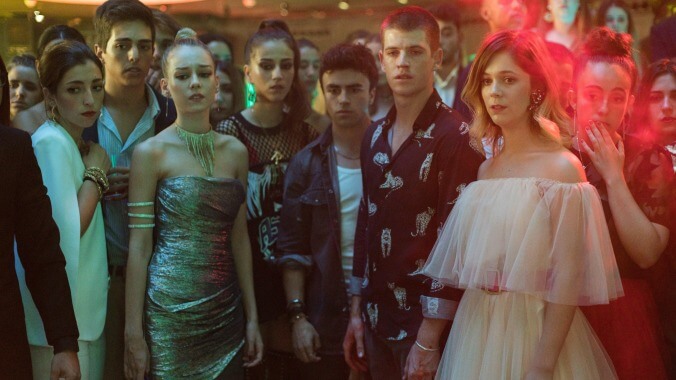
The question of the future hangs thick in the air as the students of exclusive Las Encinas high school continue to grapple with love, hormones, and way too many crimes. The first season of Èlite had spoiled rich kids fighting to maintain their status quo after the introduction of three scholarship students threw everyone’s world off balance. The second season saw the characters trying to return to a past that had been destroyed. These new episodes center on the big questions the clique faces with the prospect of adulthood: “What future do I want to build? What future do I have access to? And what future can I expect when my entire high school experience has been defined by the murders of not one, but two of my classmates?” []
Here’s an excerpt about the show from : “Proving that nepotism isn’t always a bad thing, Peter Berg parlayed a distant relation to H.G. Bissinger, author of the acclaimed non-fiction book Friday Night Lights, into a film and television adaptation. And as good as its source material is, the TV series has became one of the most distinctive hours on broadcast or cable. FNL’s well-deserved acclaim led to an unusual release strategy starting in the third season, with original episodes airing first on DirecTV, then months later on NBC. Anchored by the monumental yet understated performance of Kyle Chandler as the coach of a Texas high-school football powerhouse, the show has explored a sports-saturated culture on and off the field. Its naturalistic style highlights the relationships between Dillon High’s jocks, their families and girlfriends, the team’s well-heeled boosters, and the football-mad community. Yet there’s a bleakness underlying Berg’s portrayal; when the spotlight fades, what’s left are struggling families, glass ceilings, and unclear priorities.”
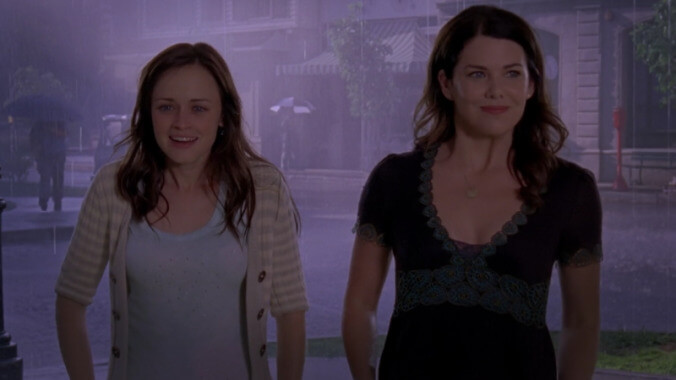
Gilmore Girls comes pre-loaded with seemingly high barriers to entry—prospective viewers should be well-versed in pop-culture arcana, tolerant of twee, and ready to parse rapid-fire dialogue—but it’s also one of the most effortlessly enjoyable TV shows of the 2000s. The best of the series to come out of The WB’s post-Dawson’s Creek small-town-drama boom, Gilmore Girls took a lighter, friendlier tone than Dawson’s or One Tree Hill, highlighted the keen, distinctive voice of creator Amy Sherman-Palladino.Alongside husband Daniel Palladino, Sherman-Palladino guided the story of Lorelai and Rory Gilmore (Lauren Graham and Alexis Bledel), a mother and daughter whose closeness in age (Lorelai was a teenage mother, much to the chagrin of her WASPy parents, played by Kelly Bishop and Edward Herrmann) gives them a unique, friend-like bond. The main setting of Stars Hollow, Connecticut, surrounded Lorelai and Rory with kooky supporting players, with a surrogate family—best friends/co-conspirators like Sookie St. James (Melissa McCarthy) and Lane Kim (Keiko Agena) as well as sparring partners/romantic interests Luke Danes (Scott Patterson), Jess Mariano (Milo Ventimiglia), and Dean Forester (Jared Padalecki)—making Stars Hollow a home-away-from-mansion for the Gilmores. The cast sports one of the deepest benches in recent TV history (and that’s without mention of Rory’s school chums, especially Liza Weil as indispensable frenemy Paris Geller), but it all comes back to the solid core of Lorelai, Rory, Emily (Bishop) and Richard (Herrmann), the Friday-night dinner crew who make Gilmore Girls worth watching for newbies and experts alike. []
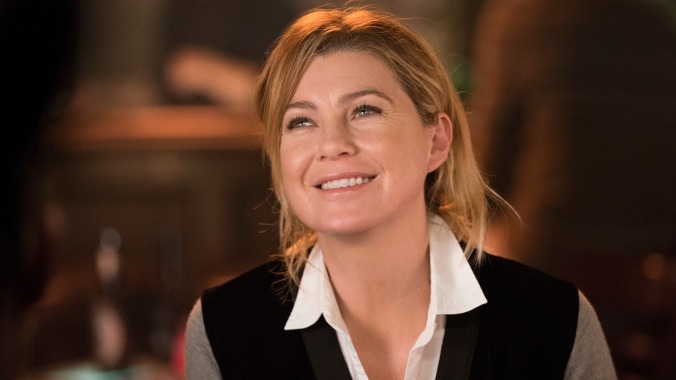
Shonda Rhimes’ soapy hospital drama is now in its 16th season, placing it in the all-time top-10 longest-running scripted primetime U.S. TV series, along with Gunsmoke and Lassie. At this point, Grey’s Anatomy’s longevity is its not-so-secret weapon; it has perfected its formula of medical problems as metaphors for relationship ones (original series title: Complications), aided by a now-familiar-as-distant relatives cast of really, really good-looking doctors. []

In the pantheon of great but underseen series that’ll hopefully find greater appreciation years after the fact, Halt And Catch Fire’s right there at the top of the list. What first seemed like AMC’s attempt at making “Mad Men… but in the ’80s” ended up being one of the most staggering stories about collaboration and creativity of the past decade, while set in another decade entirely and focusing on the otherwise emotionless world of technology. With an unbeatable cast in Lee Pace, Scoot McNairy, Mackenzie Davis, Kerry Bishé, and Toby Huss, Halt And Catch Fire may have been little-seen and critically ignored (in terms of awards recognition)—but to everyone who paid attention, it was a special show about people who simply wanted to create something special. []
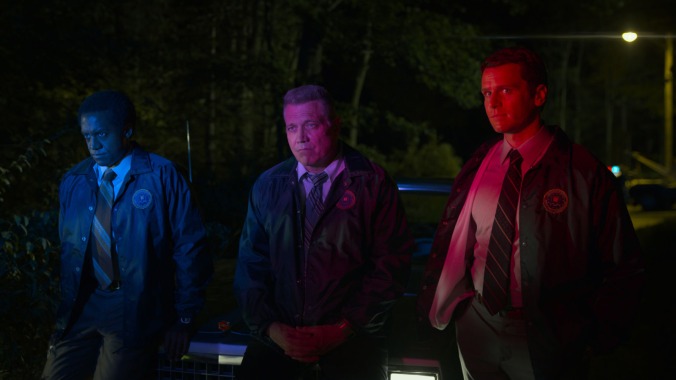
In a decade that saw some of the world’s most celebrated auteurs moving to television, David Fincher still has to be one of the biggest fish ever caught in the streaming net. His Netflix series, Mindhunter, draws out Fincher’s famously chilly aesthetics for a different type of crime series, one that relishes real-life detail and rejects neat case-of-the-week conclusions. Pairing Jonathan Groff and Holt McCallany for one of TV’s most endearing odd couples was just a bonus. []

Narcos has the misfortune of occupying the same period-piece space Netflix fouled up with Marco Polo. And on its face, the show is a similarly facile attempt to woo an international audience by taking an over-examined, inherently violent story and adding pay-cable acidity with sex scenes bathed in golden-hour light. But Narcos is a far more compelling—and, yes, addictive—show than Marco Polo. And miraculously, the show is fun to watch not because it bucks the clichés of a war-on-drugs drama, but because it embraces them. It’s the woefully rare example of by-the-numbers storytelling that serves as a reminder of how those numbers got their sequence in the first place. []
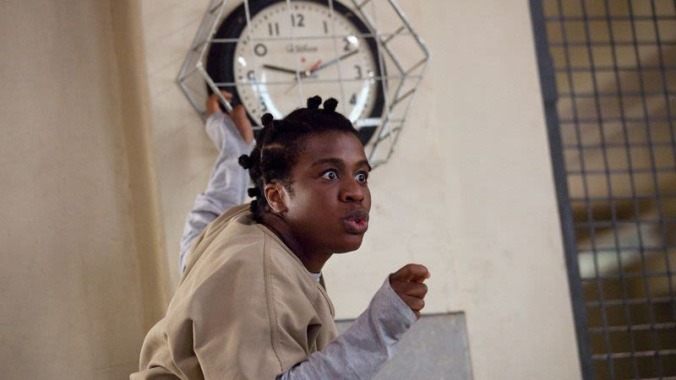
Netflix’s highest-rated original series (if the numbers we’re not allowed to see can be believed) found a microcosm for almost all of modern American life in one woman’s memoir about her time behind bars. However far the show strayed into melodrama and hot-button topicality, the focus remained on the sprawling cast of inmates—one of TV’s most diverse and multidimensional ensembles, made up of characters singular in their flaws and virtues and histories, in defiance of the system that would prefer to see them as numbers on a chart and color-coded uniforms on a line. []
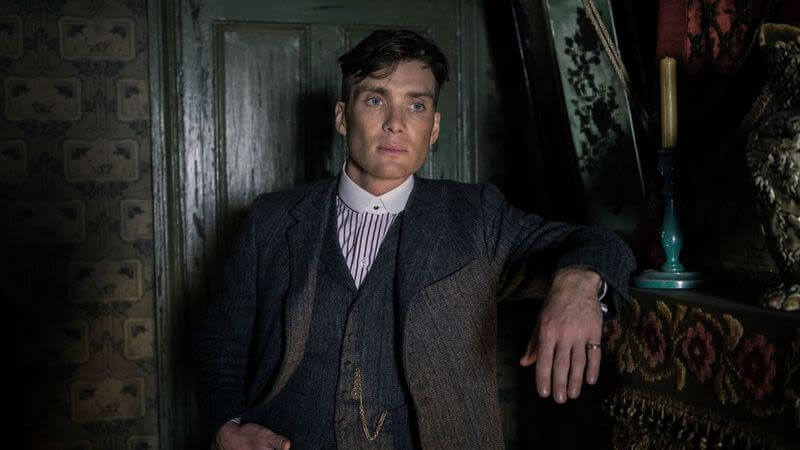
Brevity is the soul of most British-produced dramas, which manage to tell cogent, compelling stories in less time than it takes to prepare your preferred holiday meal. Steven Knight’s Peaky Blinders has waged class and gang war in six-hour bursts for the last six years, and though there have been several cliffhangers, each season has felt like its own, self-contained story. Peaky Blinders began with the cunning Thomas “Tommy” Shelby (Cillian Murphy) trying to leverage a stolen cache of guns and ammunition into greater prominence for the eponymous gang, which is inspired by the real-life Peaky Blinders. The series—chiefly written by Knight, who usually taps a single director to helm a season—is full of twists and turns that heighten the suspense but also speak to the elusive nature of class transition. Because for all of their Brummie boasting, the Shelbys—including Aunt Polly (Helen McCrory), Arthur (Paul Anderson), and John (Joe Cole)—are eager to expand beyond their corner of the Midlands, leaving absolutely nothing out of their reach, not even the winner’s circle at the Epsom Derby. Just when you think you’ll get lost in the byzantine plot, the show’s spartan direction or inspired casting choices (Tom Hardy doing his best Bob Hoskins impression as a bootlegging baker) grounds you in the action once more. Not only can you easily consume the series to date over the course of this long weekend, but your family drama is bound to look bearable compared to the Shelbys’ conflicts. []
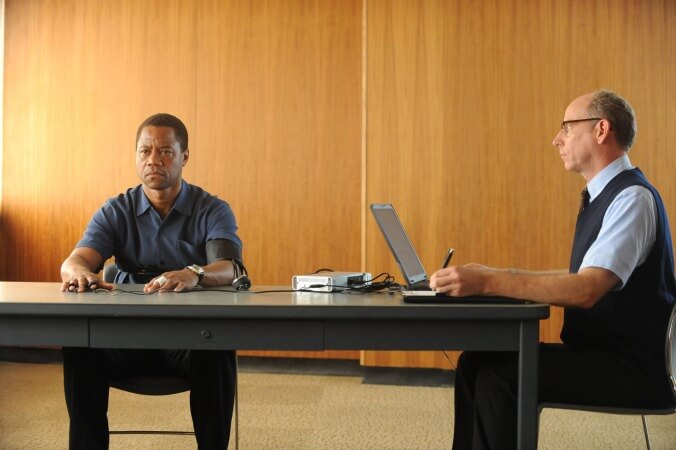
More than two decades after O.J. Simpson was acquitted of the murder of Nicole Brown Simpson and Ron Goldman, the trial of the century returned to dominate TV. Whereas Ezra Edelman’s put its focus on The Juice, The People V. O.J. Simpson: American Crime Story was all about the people: the heavy hitters familiar from the headlines, the minor players in the jury box and beyond, and the American public that made the whole thing such a sensation in the first (and now second) place. Despite the imprimatur and repertory cast (and a little bit of the tawdriness) of Ryan Murphy and Brad Falchuk, the limited series managed to handle its tricky subject matter with a tremendous amount of grace—due in no small part to source material from Jeffrey Toobin, the supervision of the Ed Wood and People Vs. Larry Flynt team of Scott Alexander and Larry Karaszewski, and a stable of directors that included John Singleton and Anthony Hemingway. Murphy helmed four installments, too, his keen eye fortunately outweighing his shaky command of tone. And there’s no denying that his involvement helped to build the series’ on-camera Dream Team, from his muse Sarah Paulson (giving the performance of her career) to big-movie-star booking John Travolta, who didn’t really embody Robert Shapiro (or any person who’s ever lived) but was utterly captivating nonetheless. Sterling K. Brown vaulted from the conflicted conviction of Chris Darden to ; Courtney B. Vance found the human beneath Johnnie Cochran’s courtroom showboat. From the vantage point of 2016—a year defined by an interminable media circus with a controversial conclusion—the events of The People V. O.J. Simpson almost appeared quaint. But that doesn’t diminish its powerful examination of race relations, fame, the American legal system, and all the points where those things intersect. The initial broadcasts of the O.J. Simpson trial were a guilty pleasure for millions of viewers. The People V. O.J. Simpson still struggled to identify a guilty party, but they certainly weren’t the people tuning in to FX every Tuesday last winter. []
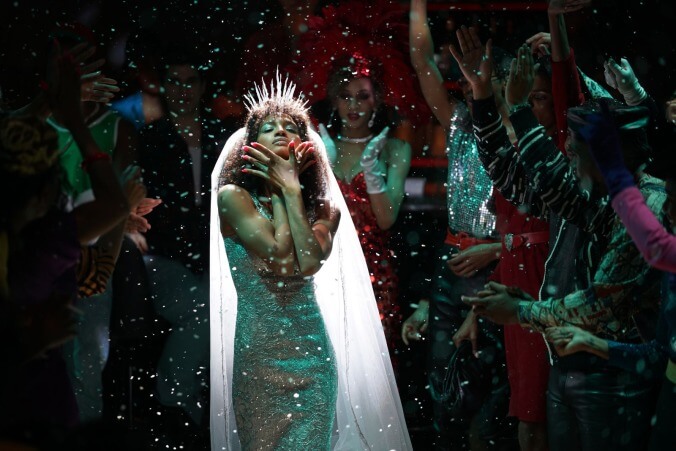
When you get your first glimpse of New York City’s 1980s ballroom scene in Pose, you wonder how this has never been a TV show before: the balls are intoxicating spectacle (especially with Billy Porter’s Emmy-winning supporting turn as the emcee), an invitation to an LGBT subculture that offers all the drama, comedy, and heartbreak that fuels great television. But as the series expands, you realize that Pose could have never existed even five years ago: following three trans women of color (brought to life by MJ Rodriguez, Dominique Jackson, and Indya Moore) on their respective journeys through the world that discriminates against them and the competitions that empower them still (sadly) feels inherently radical, and Pose refuses to sand down the edges of this story or flatten each woman’s distinct journey. Instead, it positions the balls as a support structure for the women and men living in the midst of the AIDS crisis, elaborately realized moments of joy that fuel their desire to survive (or die thriving). []

It’s not easy to come up with new ways to tell Sherlock Holmes stories. The character has been popular for more than a century, and slapping his name on something usually means at least some people will see it. Yet there’s almost no way to do anything new with the character, who remains stodgily stuck in the late 19th century and defined by a hidebound conception as a quick-witted older gentleman who’s little more than a grown-up Encyclopedia Brown. Steven Moffat’s revitalization of the setup isn’t perfect—indeed, some episodes teeter on the edge of being outright bad—but the series’ finest hours, like its first episode, “A Study In Pink,” show off Moffat’s gift for intricate, intelligent puzzlers. Moffat’s considerable gifts start with character, and he’s turned Holmes into a terrific one: a man who seems on the edge of a sociopathic break and revels in the crime-ridden world he lives in because he gets to solve those crimes. Star Benedict Cumberbatch repeatedly proves himself the perfect actor to deliver Moffat’s twisty, clever dialogue, and Martin Freeman offers up a solid take on Watson. []
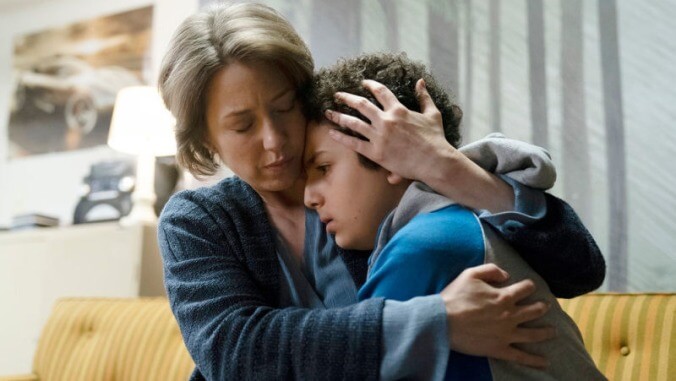
It features fractured, elliptical storytelling. There’s none of the usual question of “whodunit” in the murder mystery that serves as the main plot. And it bucks some of the standard conventions of style and aesthetic in cable mystery dramas, thanks to the bolder choices of arthouse provocateur Antonio Campos (, ), who helms the initial episodes of each season with an icy distance. But there’s an undeniably populist streak of dark, lurid entertainment that runs through USA’s The Sinner, which helps explain why it became the top-rated new drama in the summer of 2017 []

Yes, Unbelievable is hard to watch. It’s about rape—specifically, from ProPublica and The Marshall Project. Yet it stands out from many other such stories because showrunner Susannah Grant and company show absolutely no interest in demonstrating through the torment of its characters the horrors of rape. It’s deeply affecting, but it does not glory in suffering. Instead, it methodically picks apart the staggering violations that often occur after the first big violation: the systemic and human failures that leave women like Marie (Kaitlyn Dever) alone, ostracized. It underlines those failures through contrast, splitting its narrative between Marie and two detectives (Toni Colette and Merritt Wever) working to find a serial rapist several states over. There’s a didactic streak of do-this-not-that, but it’s neither self-satisfied nor preachy. Nor does that streak prevent the series from being, at its core, a terrific piece of storytelling. The performances are splendid, the cast top-notch—Danielle Macdonald! Dale Dickey! Annaleigh Ashford!—and the procedural elements as gripping as any on TV. But Unbelievable’s most remarkable quality is the choice to treat Marie like more than the worst thing that happens to her. Unbelievable is hard to watch, but it’s also hopeful. What a concept. []

Can two people stay together happily forever? The new six-episode Netflix series Wanderlust attempts to answer this age-old question by intimately dissecting the marriage of an English couple, a therapist and an academic. The therapist is played by Toni Collette, who once again proves that she is one of the finest actors working today, fearlessly exploring her character’s rigorous travails as she embarks on this surprising emotional journey.Collette’s character, the pointedly named Joy, is feeling trapped in her loving but passionless marriage. Her husband, Alan (Steven Mackintosh), feels the same way, so the two embark on an experimental polyamorous relationship wherein they both see other people while staying married. For a while, the arrangement does what it’s meant to, and rekindles the spark in their marriage; they even double-date with their respective partners. But while the couple frequently and fervently says the new setup is just for fun, with no serious consequences, that inevitably proves impossible in practice. []

Where typically police and judicial procedure on TV unfolds from the glorified perspective of the state, Ava DuVernay’s Netflix series centers the experience of the young Black and Latinx men coerced and wrongly convicted in the 1989 Central Park jogger case. Jharrel Jerome won the show’s sole Emmy this year for , whose extended sentence in adult prison is the focus of excruciating standout episode four, but truly the entire cast delivers searing performances to tell the stories of Wise, Kevin Richardson (Asante Blackk), Antron McCray (Caleel Harris), Yusef Salaam (Ethan Herisse), and Raymond Santana (Marquis Rodriguez) and the unspeakable damage to their lives, families, and communities. When They See Us asks us, at minimum, to be witness, and DuVernay makes sure it’s a sight we’ll never forget. []

Penn Badgley resumes his duties obsessing over the personal lives of attractive New Yorkers in Sera Gamble and Greg Berlanti’s adaptation of You, the Caroline Kepnes’ thriller novel of the same name. The alum stars as Joe Goldberg, a bookstore manager who sees himself as much of a collector of first editions as he is of beautiful, somewhat aimless women. In season one, that’s Elizabeth Lail as Guinevere Beck, a grad student flailing about in NYU’s MFA program. Her relationship with Joe turns into a Faustian deal—it stokes her creativity, but costs her something much more dear than tuition. Badgley fits the brooding, romantic hero role to a T, sparking an obsession among Twitter users that just feeds into the series’ (and the book’s) exploration of unhealthy relationship dynamics. You is packed with twists, but it never loses sight of the people caught up in its winding plot. You can catch up on season one just in time for the premiere of season two in December, which will find ’s Victoria Pedretti in Joe’s sights. It might not seem like the most intuitive watch for this time of year, but You actually serves as a reminder to shed when and where you can. []
GET A.V.CLUB RIGHT IN YOUR INBOX
Pop culture obsessives writing for the pop culture obsessed.